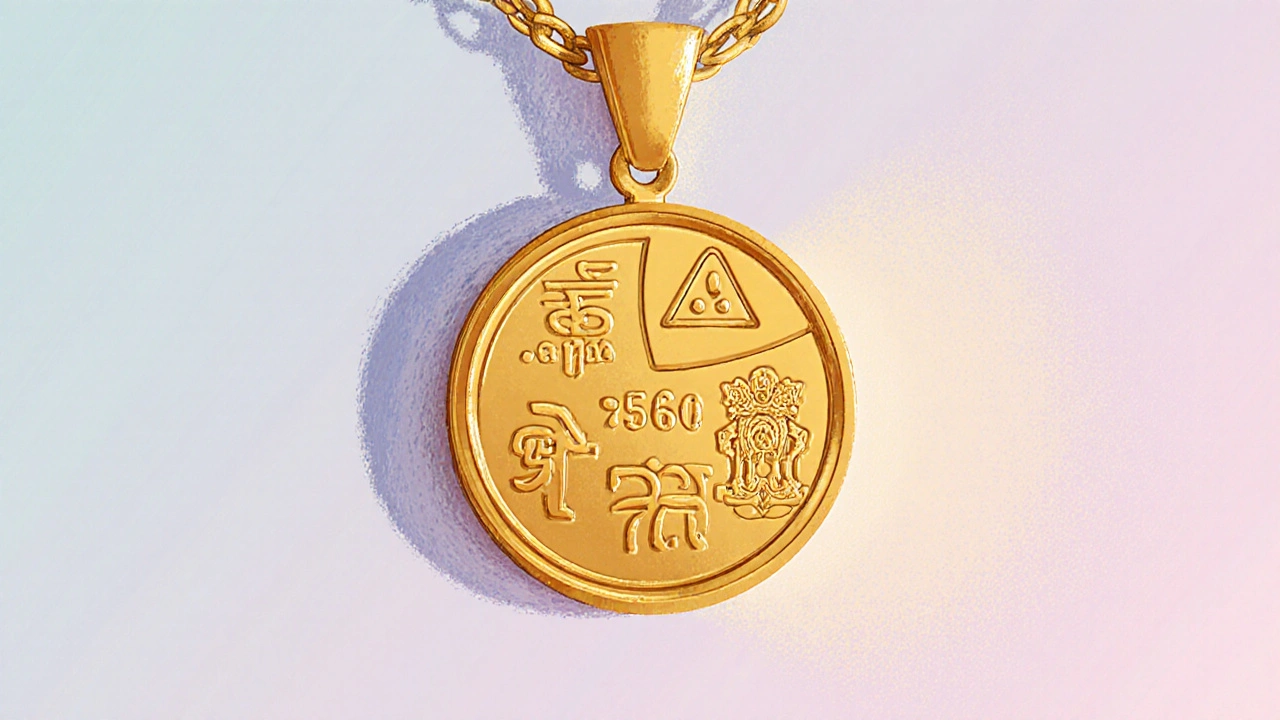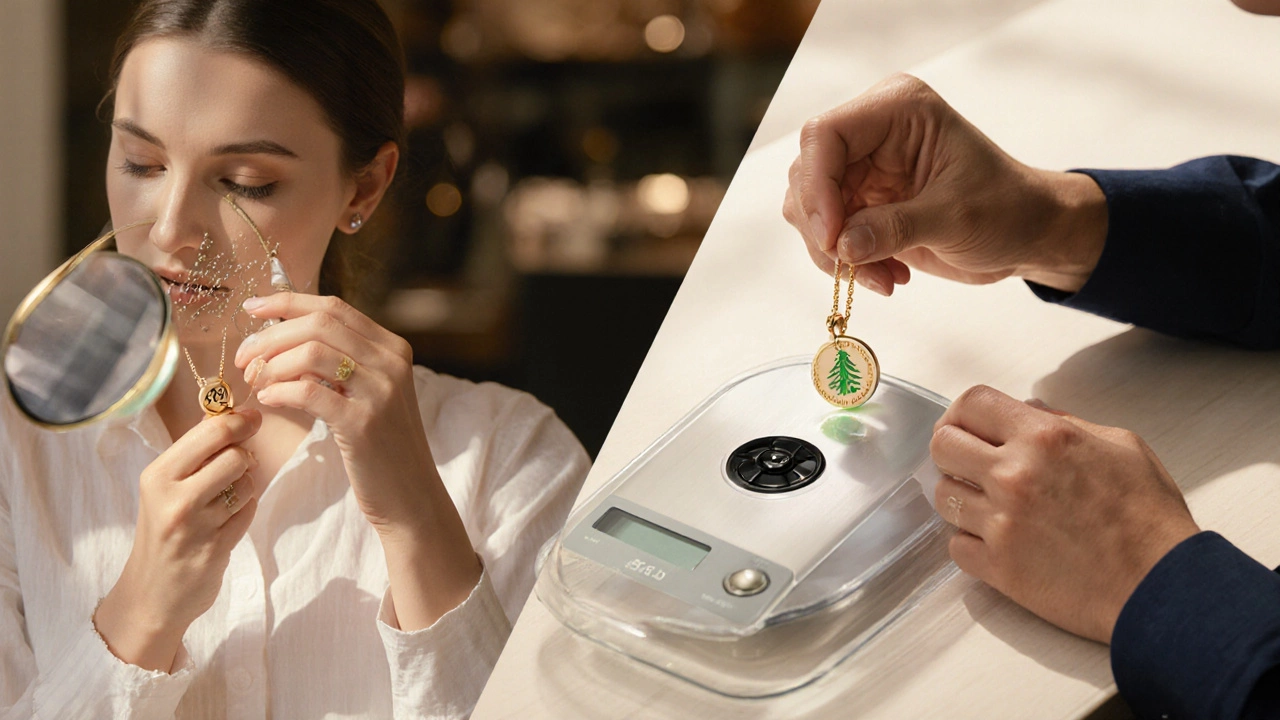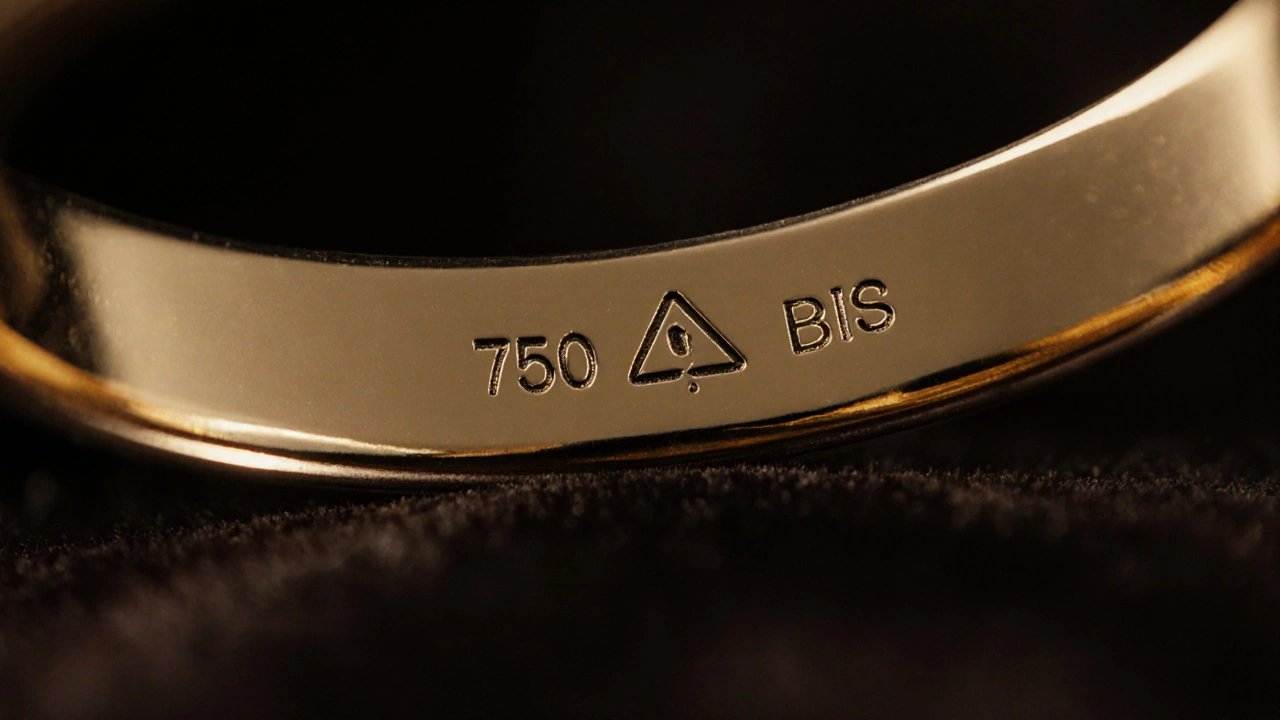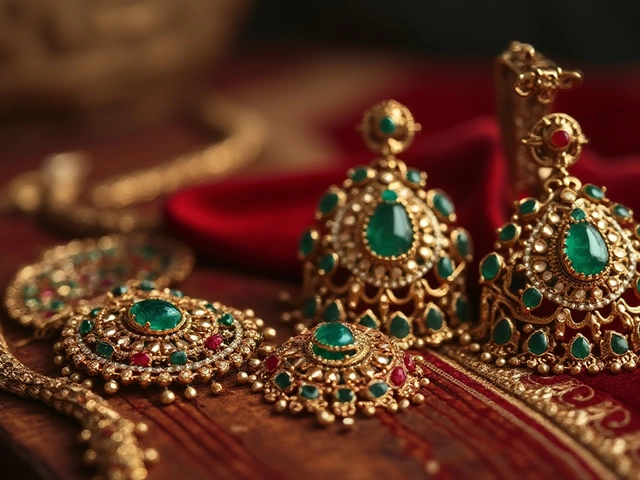750 Gold Hallmark Decoder
750 Gold Hallmark indicates 18 karat gold, meaning 75% pure gold and 25% other metals.
In India, this hallmark is verified by the Bureau of Indian Standards (BIS).
A genuine BIS hallmark includes:
- Purity mark (750)
- BIS logo (triangle with three dots)
- Assay office symbol and serial number
| Hallmark | Karat | Purity % |
|---|---|---|
| 999 | 24 K | 99.9% |
| 916 | 22 K | 91.6% |
| 750 | 18 K | 75.0% |
| 585 | 14 K | 58.5% |
| 417 | 10 K | 41.7% |
Enter the hallmark number you found on your gold jewelry to decode its purity:
Before purchasing gold jewelry, check for these indicators of authenticity:
- Look for the BIS hallmark along with the purity mark
- Perform a magnet test – real gold is non-magnetic
- Request a BIS certificate for high-value purchases
- Compare weight with similar designs for consistency
Ever wondered why a ring or necklace has the number 750 stamped on it? That tiny mark is a quick code that tells you how much pure gold is actually inside the piece. Knowing what it means can save you from overpaying and help you spot fakes, especially when you’re shopping for gold jewelry in markets, boutiques, or online.
Quick Takeaways
- 750 means the piece is 75% pure gold, or 18karat.
- India follows the BIS hallmark system, which adds extra symbols like the BIS logo, purity mark, and hallmarker’s logo.
- Other common marks include 999 (24K), 916 (22K), and 585 (14K).
- Check the hallmark alongside the maker’s logo and weight to verify authenticity.
- Simple tests - visual inspection, magnet test, acid test - can confirm the gold content before you buy.
Let’s break down everything you need to know about the 750 stamp, how it fits into global gold‑purity standards, and what to look for when you’re buying jewelry.
What Does the 750 Mark Actually Signify?
750 Gold Hallmark is a purity stamp indicating that the metal contains 75% pure gold and 25% other metals, usually copper, silver, or zinc. In the world of gold, purity is expressed either as a percentage or as karats. Because 24karat gold is considered 100% pure, 750 translates to 18karat (24×0.75=18). This is the most common purity for everyday jewelry in India and many other markets because it offers a good balance between durability and the warm yellow hue people love.
Gold Purity Standards Around the World
Different countries use slightly different hallmark systems, but the underlying math is the same. Below is a quick look at the most popular standards.
| Hallmark | Karat | Purity % | Typical Use |
|---|---|---|---|
| 999 | 24K | 99.9% | Investment bars, high‑end necklaces |
| 916 | 22K | 91.6% | Traditional Indian jewelry, wedding sets |
| 750 | 18K | 75.0% | Everyday rings, earrings, chain necklaces |
| 585 | 14K | 58.5% | Affordable fashion pieces, mixed‑metal designs |
| 417 | 10K | 41.7% | Budget jewelry, plated items |
Notice how the hallmark number directly reflects the percentage of gold. If you see a piece marked 916, you’re looking at 22karat (91.6% pure) gold. The 750 mark falls right in the middle, offering a nice compromise between softness (high purity) and strength (alloyed metals).

India’s Hallmarking System and the Role of BIS
In India, the official gold‑purity verification is handled by the Bureau of Indian Standards (BIS) the national body that certifies the composition of gold, silver, and platinum items and stamps them with a unique hallmark. A genuine Indian hallmark typically includes three components:
- The purity figure (e.g., 750).
- The BIS logo (a triangle with three dots).
- The assay office’s symbol and a unique serial number.
These marks together guarantee that the seller has complied with the legal standards for gold content. If a piece lacks the BIS hallmark, it could still be genuine, but you have less regulatory backing for the purity claim.
Understanding Gold Alloys and Why 750 Isn’t Pure Gold
Pure gold (24K) is too soft for most jewelry; it bends and scratches easily. To make it wearable, manufacturers blend gold with other metals-copper, silver, zinc, or nickel-creating an gold alloy a mixture where gold is combined with other metals to improve hardness, color, and durability. The exact alloy recipe varies by brand and regional taste. For 18K gold (750), the alloy typically contains:
- 75% gold
- 15% copper (adds a warm reddish hue)
- 10% silver (balances color and hardness)
This blend is why 18K pieces are both strong enough for daily wear and retain that classic yellow glow.
How to Verify a 750 Hallmark Before Buying
Even with hallmarking, counterfeit pieces slip through. Here are practical steps you can take:
- Visual inspection: Look for the 750 stamp, BIS logo, and a tiny serial number. Hallmarks are usually impressed on the inner side of rings or on the clasp of necklaces.
- Magnet test: Real gold is non‑magnetic. Use a small magnet; if the piece sticks, it likely contains a high proportion of iron or steel.
- Acid test: A professional jeweler can apply a drop of nitric acid on a tiny scratch. For 750 gold, the acid will turn a specific shade (usually a light green). Acid test a common method where a drop of acid reacts with the metal to reveal its purity is quick but requires proper safety measures.
- Weight comparison: Compare the weight of two identical designs-one marked 750 and another marked 585. The higher‑purity piece will be heavier because gold is denser than most alloy metals.
If you’re buying online, request a clear close‑up photo of the hallmark area and ask for a BIS certification copy.

Common Misconceptions About the 750 Mark
Two myths often confuse shoppers:
- "750 is the same as 24K": Not true. 750 equals 18K, which is 75% gold. Pure gold (24K) is marked 999 or 24K.
- "Higher karat always means better value": While 24K gold has the highest gold content, it’s also the most vulnerable to dents. For everyday jewelry, 18K (750) offers better wearability, which many buyers consider better value.
Choosing Between 750 and Other Gold Purities
If you’re weighing options, think about these factors:
- Budget: 750 gold sits between the pricey 916/999 pieces and the more affordable 585/417 options.
- Lifestyle: Active people often prefer 750 because it resists scratches better than 22K.
- Design Preference: Some traditional Indian designs look richer in 22K (916) due to its deeper hue, while modern minimalist pieces shine in 18K.
In short, pick the purity that matches your budget, wear‑frequency, and aesthetic taste.
FAQs
What does the number 750 mean on a gold ring?
It indicates the ring is made of 18karat gold, meaning 75% of the metal is pure gold and the remaining 25% consists of other metals that give the piece strength and color.
Is a 750‑marked piece always genuine?
Not necessarily. While the hallmark is a good sign, counterfeiters can add fake stamps. Verify with additional checks like the magnet test, acid test, or request a BIS certification.
How does 750 compare to 916 gold?
916 gold is 22karat (91.6% pure) and is softer than 750 gold. 750 offers better durability, making it more suited for daily wear, whereas 916 is often chosen for traditional bridal sets.
Can I get a 750 gold piece with a different color, like white or rose?
Yes. By adjusting the alloy mix-adding more nickel for white gold or more copper for rose gold-you can keep the 750 purity while changing the final hue.
What should I do if a seller cannot show the BIS hallmark certificate?
Ask for an independent test from a reputable jeweler. If the seller refuses, it’s safer to walk away, as the lack of certification raises a red flag.
Now you know why that little "750" stamp matters, how it fits into the bigger gold‑purity picture, and what steps you can take to ensure you’re getting true gold. Next time you’re in a shop or scrolling through an online catalog, you’ll spot the hallmark, decode it, and shop with confidence.



